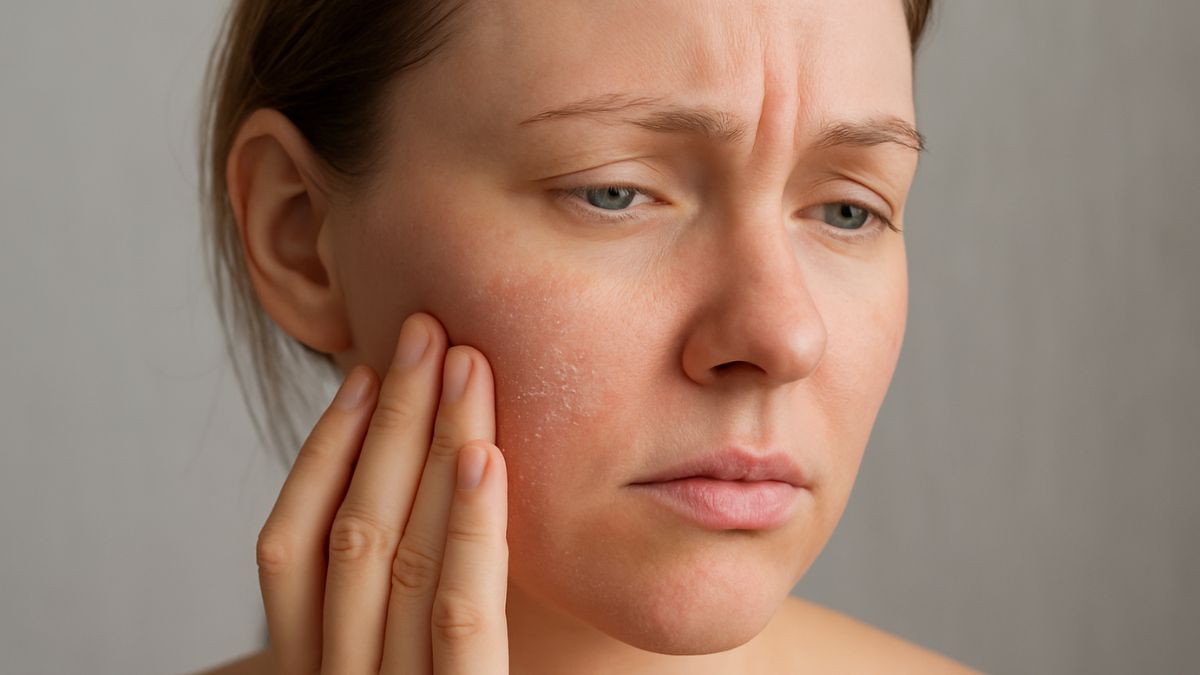New York: Retinol, the widely praised skincare ingredient derived from vitamin A, has earned a reputation for treating acne, fading dark spots, and reducing wrinkles. But alongside its benefits, many users report experiencing flaking, peeling, or even burning — a condition often called retinol burn or retinol dermatitis.
These reactions typically occur when the skin’s protective barrier is disrupted by retinol’s rapid acceleration of skin cell turnover, leaving new, delicate skin cells exposed. For beginners and those using high concentrations of retinol, irritation may develop within 24 hours.
“Use a very gentle cleanser and moisturizer when using retinol,” advised Dr. Divya Shokeen, MD, on SELF. Meanwhile, Dr. Lauren Penzi, MD, said: “Another big sign is that your face will begin to burn, like when you wash it or put any other products on. That sensation means that your barrier is torn up and you’re overdoing it.”
Retinol burn often shows as flaky, dry, and irritated skin due to barrier disruption.
Treat it by stopping retinol, simplifying your skincare, and moisturizing deeply.
Prevent it by using low concentrations, phased introduction, and buffering with moisturizer.
Always wear sunscreen—retinol increases UV sensitivity.
Listen to your skin: burning or stinging means press pause.
Also Read: Meditation for Anxiety and Stress: How to Calm Your Mind in a Loud World
What Is Retinol Burn and Why Does It Happen?
According to Healthline, retinol burn occurs when the skin becomes dry, inflamed, or discolored due to overexposure to retinol or retinoids like tretinoin. This reaction usually develops when users begin using a high concentration of retinol without easing into it.
The symptoms — including dryness, flaking, discoloration, and irritation — arise because “retinol makes your skin cell turnover faster,” Healthline reports. “This creates a lag time before new, healthy cells come to the surface of your skin. Your new skin is exposed before it’s ready.”
How to Treat Retinol Burn Safely
The first step, dermatologists agree, is to stop applying any retinol products. Let the skin rest, and avoid makeup or actives that could compound the irritation.
“Use a very gentle cleanser and moisturizer when using retinol,” Dr. Shokeen told SELF. She recommends looking for ingredients like hyaluronic acid, glycerin, and ceramides, which help repair the skin barrier and restore hydration.
Healthline further advises applying “a gentle, hypoallergenic moisturizer” and considering “soothing botanicals like aloe vera or witch hazel” to support healing. An OTC hydrocortisone cream may also help with inflammation, but “use it sparingly, especially around your eyes. Do not use any steroid cream for longer than 2 weeks at a time.”
Preventing Retinol Burn: The 1-2-3 Approach
To reduce the likelihood of irritation, experts suggest easing retinol into your routine slowly.
Dr. Shokeen shared a simple timeline in SELF:
“Use a pea-size amount on your face once a week for one week… Then twice for the next two weeks… and three times for the following three weeks.”
Additionally, she recommends the sandwich method — applying moisturizer before and after the retinol product — to dilute its impact without sacrificing its benefits.
“The reason I recommend waiting is that you don’t want to dilute your retinol too much by applying it too soon between steps,” Dr. Shokeen said.
Sun Sensitivity and Retinol: A Crucial Connection
Retinol use increases the skin’s vulnerability to sun damage. Healthline warns: “Using any form of retinol makes your skin more prone to sunburn. Sun damage combined with retinol burn is a recipe for skin discoloration, inflammation, and more.”
Choose a broad-spectrum SPF 30+ formulated for the face, and apply it every morning, especially when using retinol at night.
Signs You’re Overdoing It
Some peeling and dryness are expected. But if you’re experiencing stinging, inflammation, or raw, red patches, that may indicate a deeper issue.
“Another big sign is that your face will begin to burn, like when you wash it or put any other products on,” Dr. Penzi told SELF.
Both dermatologists strongly advise discontinuing retinol at that point and focusing on gentle moisturizers. “Then, when things have finally calmed down,” SELF writes, “that’s when you can reconsider slowly bringing retinol back into your routine.”







